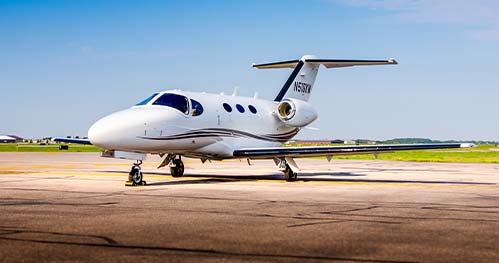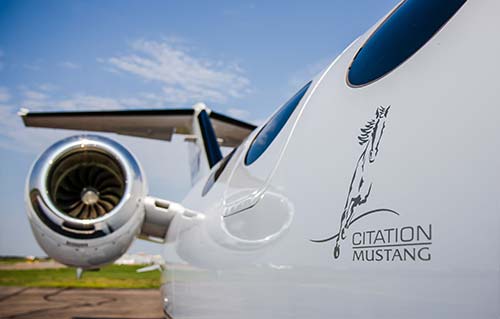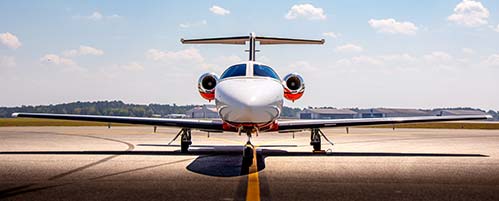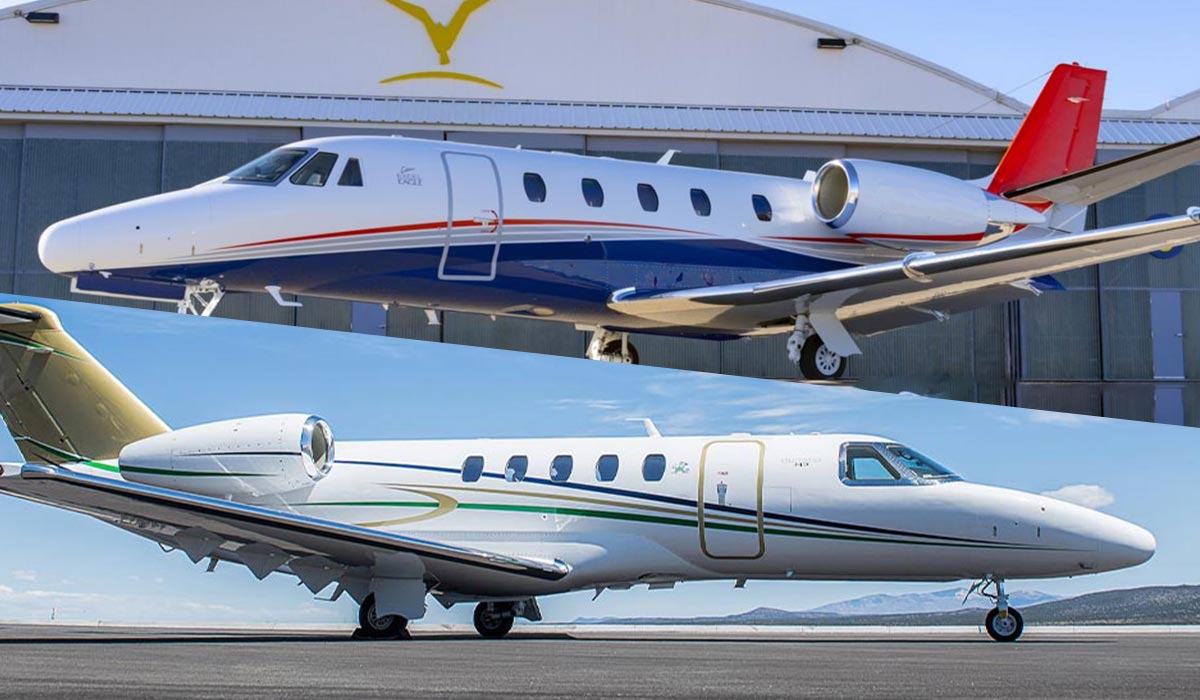
Programs or No Programs? The Age Old Debate…
Date
April 26, 2021One of the most common questions I’m asked from prospective buyers and existing clients is what I think about “programs” when it comes to the Citation Mustang.  While the different manufactures and models have slight variations in the programs offered and the exact terms under which they operate, the underlying concepts remain relatively similar. I’ll go into more detail below, however, my answer is actually a question: “What is your tolerance for risk?” Everybody loves having insurance when it gets used, however, the expense to carry can be costly, annoying and frustrating – not only when it’s not needed or used, but also when a claim comes up and there is a fight to get it covered (and believe me, I’ve both seen and participated in some of those fights…)
While the different manufactures and models have slight variations in the programs offered and the exact terms under which they operate, the underlying concepts remain relatively similar. I’ll go into more detail below, however, my answer is actually a question: “What is your tolerance for risk?” Everybody loves having insurance when it gets used, however, the expense to carry can be costly, annoying and frustrating – not only when it’s not needed or used, but also when a claim comes up and there is a fight to get it covered (and believe me, I’ve both seen and participated in some of those fights…)
There are 3 main coverages offered on the Citation Mustang – Airframe parts, Airframe Labor and Engines.
AIRFRAME PARTS & AIRFRAME LABOR
Parts and Labor programs are offered by both Textron and JSSI, with the majority of (Mustang) owners electing to go with Textron for coverage under their “ProAdvantage” programs named ProParts and ProTech respectively. These are typically 3 year contracts with set hourly rates (subject to annual increase) and advertised annual minimums of 150 hours per year (many owners have been successful in getting these annual minimums reduced). ProParts covers both consumable and non-consumable parts (i.e. brakes, tires, windshields, flap actuators etc…and as to be expected, there are some exclusions). ProTech covers labor on the airframe for both scheduled and unscheduled maintenance work (including engine R&R and unscheduled AOG MSU visits). At the end of the contract (or at time of sale), if your account balances are positive, Textron offers an “efficiency bonus”, whereby they have the option to credit the owner’s account 65% of the positive balance on account. If account balances are negative at contract expiration, those negative balances get forgiven, however, in the case of a sale, any negative balances must be “paid-up”, as the programs will have been terminated prior to the end of the contract. ProParts and ProTech are both subject to “buy-ins” which vary depending on the Aircraft’s current program status, existing (non-transferable) account balances and maintenance schedule. On average, you can expect a $10,000 buy-in for ProParts, with ProTech varied depending on the individual Aircraft’s current inspection status.
2021 Rates
- ProParts: $206/hr
- ProTech rates are based on annual usage and age of aircraft, but for the average user of an aircraft 10 years old (or older), you can expect to pay around $350/hour with a reduction in rates for higher annual utilization and/or newer aircraft.
ENGINES 
Here’s where it gets fun… or perhaps just confusing. Engine programs are offered by Textron (under their PowerAdvantage programs), direct by Pratt & Whitney (under their ESP programs) or by JSSI (under their full enrollment programs, or “Unscheduled Only” programs). Most buyers are typically used to seeing Mustangs advertised on “PowerAdvantage or PowerAdvantage+ (Plus) – the programs offered and administered by Textron. This is mainly due to the fact that when the Mustang first started delivering, there was not an option to go direct to P&W for coverage, as Textron had the exclusive rights to administer the programs (which were underwritten by P&W). With the exclusively expired, we are starting to see more and more Mustangs enrolled on P&Ws ESP programs…. and for good reason:
- P&W has no annual program minimums (NONE!)
- There are no prerequisites or inspections required to enroll (this does not however mean you should forego engine borescopes during your pre-purchase due diligence, as FOD and corrosion are NOT covered under Pratt or Textron programs).
- P&W offers both a full buy-in program as well as a “flex” option for buy-in — essentially, you can pay just 20% of the total buy-in and defer the balance until later on (typically with 2 additional lump sum payments, one at Hot Section (1,750 hours) and one at Overhaul (3,500 hours).
- While a slightly higher hourly rate for ESP, P&W’s programs provide more coverage as compared to Textron’s PA+ or PA programs.
While Pratt used to offer 4 levels of coverage (Gold, Gold Lite, Silver, Silver Lite), the Silver programs have gone away, leaving just Gold and Gold Lite.
2021 ESP Rates (Pratt & Whitney)
- Gold $181.70/hour/engine
- Gold Lite: $164.30/hour/engine
**The main difference between Gold and Gold Lite (aside from hourly rate) is that Gold Lite does not include life limited parts
2021 ProAdvantage Rates (Textron)
- PowerAdvantage+: $171/hour/engine
- PowerAdvantage: $102/hour/engine
**The main difference between PA+ and PA is that PA does not include labor on the engines or life limited parts.
***Textron does not offer any sort of “Flex” buy-in for their programs. If you wish to enroll on PA or PA+ you must pay the buy-in 100% in full.
To calculate “buy-in” rates – simply take the current hourly rate for the program you are looking to enroll on, and multiply it by the number of hours on the engine. This is made slightly more complicated if enrolling post Hots, as you will then need to give credit for a Hot Section, the amount for which can vary by program.
 As mentioned above a 3rd option for engine coverage is through JSSI. While JSSI does offer a full coverage program comparable to P&W or Textron — where they really shine is through their “Unscheduled Engine Program”. In basic terms, this program is simply a flat rate insurance program that covers the engines for anything that happens outside of scheduled inspections. This program does not provide a savings plan for your scheduled events (such as Hot Sections and Overhaul), however, is a great option for operators who want to eliminate the risk of costs due to unanticipated engine maintenance events. The annual rate varies based on utilization, however, for 150 hours or less, the 2021 rate is around $3,725 per engine. For first time enrollees, there is also a one time enrollment fee of $7,000.
As mentioned above a 3rd option for engine coverage is through JSSI. While JSSI does offer a full coverage program comparable to P&W or Textron — where they really shine is through their “Unscheduled Engine Program”. In basic terms, this program is simply a flat rate insurance program that covers the engines for anything that happens outside of scheduled inspections. This program does not provide a savings plan for your scheduled events (such as Hot Sections and Overhaul), however, is a great option for operators who want to eliminate the risk of costs due to unanticipated engine maintenance events. The annual rate varies based on utilization, however, for 150 hours or less, the 2021 rate is around $3,725 per engine. For first time enrollees, there is also a one time enrollment fee of $7,000.
So again, what is your tolerance for risk? Are you willing (and able) to cover a $60,000 windshield should your aircraft require a replacement (PS – you have two to worry about!) or would you prefer to have a predictable hourly rate for parts that leaves all the guessing behind?
On the engines, are you prepared to spend upwards of $250,000 on hot sections in addition to being on the hook for anything that comes up unscheduled? (FADEC failures & bearing issues can easily and quickly add up to bills that exceed $100,000) Or would you prefer to pay a pre-determined hourly rate and start saving towards your scheduled events, all the while knowing you are also covered for anything that comes up outside of scheduled inspections. If your plan is to ask current owners/operators what their opinion is, prepare to receive a wide range of answers, with many owners being able to cite specific examples on why the programs have or have not worked for them and in their favor. After all, it’s insurance right?!? And let’s not forget, these programs don’t exist if a profit isn’t being made…
Questions? Want to discuss in more detail or understand how these programs effect aircraft values? Reach out anytime!
Jade Hofeldt
[email protected]



